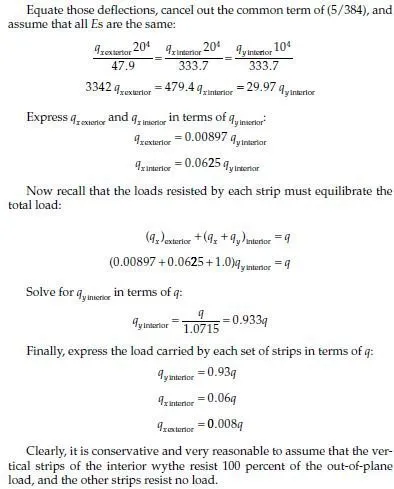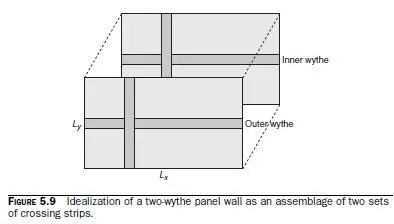The analysis of Sec. 5.1.13 can easily be extended to the case of a twowythe panel wall, with an outer wythe of clay masonry and an inner wythe of concrete masonry shown in Fig. 5.9.
As before, assume that each wythe of the panel resists out-of-plane loading as an assemblage of crossing strips, in the x direction (horizontally on the page) and the y direction (vertically on the page). At the very end of this section, it will be shown that such an assumption is legitimate (strip method).
Lets also assume that the inner wythe is of hollow, ungrouted, 8-in.
CMU laid in face-shell bedding, and that the outer wythe is of solid modular units (nominal thickness of 4 in.).
From Sec. 5.1.6, we know that the moment of inertia of the hollow CMU is 444.9 in.4 per 16 in. of width, or 333.7 in.4 per foot of width. It is proper to compute the average flexural stiffness of the wall using the moment of inertia of the hollow unit rather than the moment of the faceshell bedding only, because the bed joints occupy only a small portion of the volume of the wall.
The moment of inertia of the modular outer wythe, per foot of width, is


